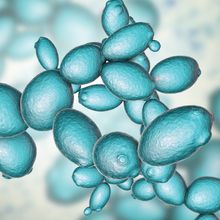Login
Subscribebiochemistry

Natural High: Endogenous Psychedelics in the Gut and Brain
Iris Kulbatski, PhD | Sep 8, 2023 | 8 min read
Psychedelics are evolutionarily ancient compounds produced by fungi, plants, and microbes. Humans also synthesize psychedelics. Researchers want to know how and why.

The Origins and Recent Promise of Nonsense Suppressor tRNAs
Ida Emilie Steinmark, PhD | Sep 8, 2023 | 4 min read
A discovery that goes back to the first studies of translation has become the topic of biotech buzz.

The Ins and Outs of LC-MS
Deanna MacNeil, PhD | 4 min read
From proteomics to pharmacokinetics, researchers turn to advances in liquid chromatography and mass spectrometry to identify and quantify components in different samples.

CRISPR-like Abilities in Eukaryotic Proteins
Ida Emilie Steinmark, PhD | Sep 8, 2023 | 4 min read
Two groups independently discovered that Fanzor proteins in eukaryotic organisms are CRISPR’s genome-editing cousins.

Lighting Up Diagnostics
Danielle Gerhard, PhD | Sep 8, 2023 | 6 min read
Brought together by a shared interest in synthetic biology and diagnostics, two researchers are transforming how we label biomolecules.

The Intricacies of Western Blotting
The Scientist | 1 min read
In this webinar, R. Hal Scofield discusses hints and tips on how to generate clean and reproducible western blot data, even in tricky situations.

Deciphering Plants’ Biochemical Messages
Ida Emilie Steinmark, PhD | Sep 1, 2023 | 2 min read
Esther Ngumbi believes that chemical signals between plants, microbes, and insects hold the key to secure and sustainable food production.

Expanding Sample Analysis While Shrinking Instrument Footprints
The Scientist Staff | Sep 1, 2023 | 2 min read
Cutting-edge analytical instruments provide researchers with improved analysis capabilities in a compact design.

Technique Talk: The Fundamentals of Mass Spectrometry-Based Proteomics
The Scientist | 1 min read
Learn the basics of proteomics analysis and nanoLC-MS/MS data acquisition.

Fishing for Viruses With DNA Nanobait
Danielle Gerhard, PhD | Sep 1, 2023 | 2 min read
Scientists developed a novel nanotechnology that simultaneously detects multiple viruses from patient samples in less than an hour.

The Oligo Was a No Go
Danielle Gerhard, PhD | Sep 1, 2023 | 2 min read
As soon as Melanie McConnell added the wash buffer to her sample, she knew she had made a mistake.

Optimizing Sample Homogenization
The Scientist and Bertin Technologies | 3 min read
Discover how the latest homogenization technology improves and simplifies the processing of any biological sample.

Islands of Knowledge: Hairy Skin Moles Make Their Mark
Iris Kulbatski, PhD | Aug 7, 2023 | 3 min read
Skin moles that sprout thick, long hairs produce signaling molecules that stimulate hair follicle stem cells to initiate new hair growth. This discovery may make baldness a thing of the past.

Cryo-EM: Building on a History of Invention and Innovation
Thermo Fisher Scientific | Aug 2, 2023 | 1 min read
From humble yet ingenious beginnings to Nobel recognition, cryogenic electron microscopy (cryo-EM) provides insights into scientific questions that other technologies are unable to answer.

Emergent Recombinant Proteins in Clinical Diagnostics
Scripps Laboratories | 1 min read
A new era of reliable recombinant proteins makes it possible for researchers to replace tissue-derived biomarkers in a variety of diagnostic assays.

My Protein Didn't Fold and Neither Did I
Meenakshi Prabhune, PhD | Aug 1, 2023 | 2 min read
When Gaurav Ghag realized that he had replicated a calculation error in every experiment during four years of his graduate research, he initially thought that his career had unraveled with his protein.

A Probiotic to Protect Caribbean Corals
Mariella Bodemeier Loayza Careaga, PhD | Aug 1, 2023 | 2 min read
A bacterial strain from healthy corals could slow the progression and prevent transmission of the destructive stony coral tissue loss disease in the wild.

Illuminating Gels with Laser Power
The Scientist and Biotium | 3 min read
How to upgrade gel electrophoresis imaging.

Disease Scent Signatures Disclose What the Nose Knows
Iris Kulbatski, PhD | Jun 12, 2023 | 4 min read
Researchers redefine the lost art of smelling illness using one woman’s exquisitely sensitive nose.

Waves of Macromolecule Production During the Cell Cycle
Mariella Bodemeier Loayza Careaga, PhD | Jun 1, 2023 | 3 min read
In individual yeast cells, essential biosynthetic processes peak at different times in the cell cycle, revealing a temporal dynamic once thought limited to DNA synthesis.